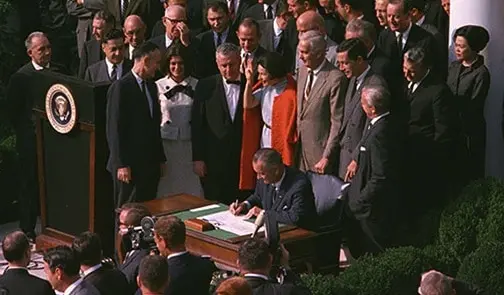Art knows no boundaries. It blossoms through the flow of creative ideas that cross geographic borders and span generations. It was, for instance, after reading the Russian writer Fyodor Dostoyevsky’s The Brothers Karamazov that the American playwright Arthur Miller decided to become a writer. It was Miller’s Death of a Salesman that later inspired Iranian director Asghar Farhadi, who adapted the play for his Oscar-nominated film, “The Salesman.” This month, Mr. Farhadi should be traveling to Arthur Miller’s home country to attend the 2017 Academy Awards ceremony in Los Angeles, and to celebrate his Oscar nomination.
Instead, because of President Donald Trump’s January 27 Executive Order restricting travel and immigration, he may not be able to enter the United States at all. In protest, Mr. Farhadi has declared that he will not attend the event, even if an exception were to be granted.
The director’s international acclaim has brought significant public attention to his situation. Less discussed, however, is the destructive impact of the immigration ban on many other international artists working in every format—and their audiences. Exhibitions and tours have been postponed, or canceled altogether. Arts and culture programming is in jeopardy at concert halls, museums, festivals, and more. Artists’ ability to perform, exhibit, or distribute their work is imperiled. Shari Rezai, a concert promoter whose work focuses on Iranian music, is unsure whether she will be able to hold any concerts in the future. Thomas P. Campbell, director of the Metropolitan Museum of Art, has confirmed in interviews that a number of museum programs are in danger.
In the eleven days since the executive order was issued, PEN America’s Artists at Risk Coalition has recorded at least 27 cases of artists who have been negatively affected by the immigration ban. Syrian singer Omar Souleyman, who performed at the 2013 Nobel Peace Prize Concert in Oslo, Norway, may now be prevented from singing at Brooklyn’s World Music Institute, scheduled for May 2017. Iranian electronic artist Ash Koosha will likely be blocked from touring for at least the next few months. Hala Kamil, a Syrian woman who is the subject of an Oscar-nominated documentary about her family’s flight from war-torn Aleppo to the safety of Germany, will be barred from attending the very ceremony that will provide a platform of recognition for the extreme hardships she and thousands of others have undergone as refugees. These are a just a small subset of the multitude of immigrants, refugees, and visitors whose lives have been upended by this order, but the loss of their creative contributions to our shared cultural wealth is of particular poignancy.
Even if the initial 90-day ban proves temporary, it will bear consequences far beyond its time span in the world of the arts. The majority of cultural events are planned a year or more in advance. Even now, the political and legal uncertainties inherent in the immigration ban are preventing the organization of future events that would include participants from the seven targeted countries. Governments of several countries have now ordered retaliatory bans on the travel of Americans. There is no telling how long these new barriers will continue to limit artistic exchange.
The United States has long been a bastion of freedom for artists around the world, many of whom have experienced persecution and oppression in their home countries. Over the years, hundreds of writers and other artists—such as the writer Isabel Allende, who fled Chile when her father’s cousin was deposed as president in 1973, and Milos Forman, who fled Czechoslovakia after the 1968 Prague Spring—have looked to the United States for protection, tolerance, and the space to express their creativity freely. These are the values that are now under threat—at a time of profound polarization in the United States, and globally—when they are most needed. It is artists who are best equipped to highlight the human effects of political decisions, artists who can reach across the ideological divides to find our shared emotions, artists who can pierce our echo chambers and touch deep-seated fears that are dividing American society today. Suppressing their ability to share their work will do nothing to make the United States more secure, and will have a far-reaching impact on intercultural understanding.
